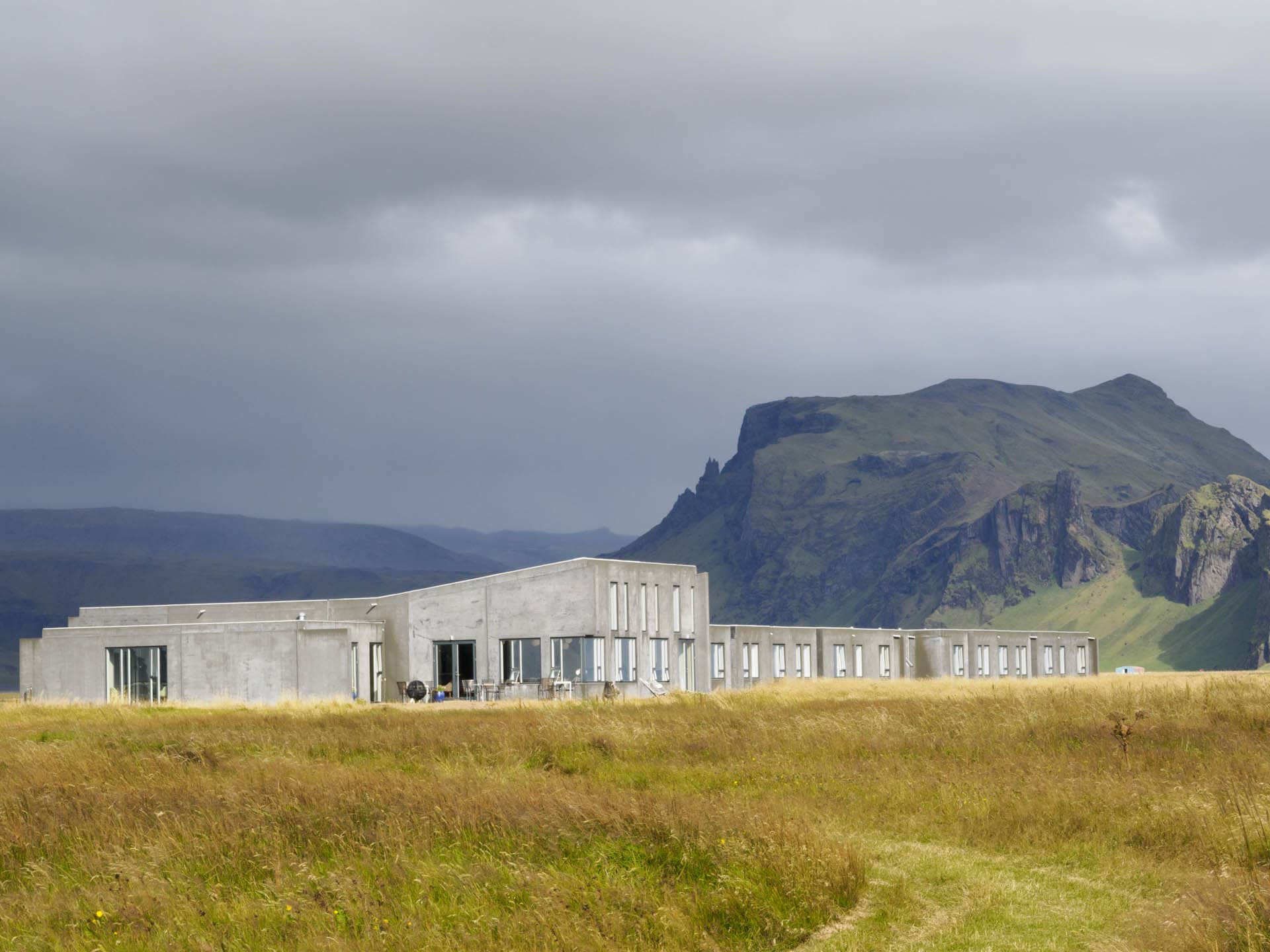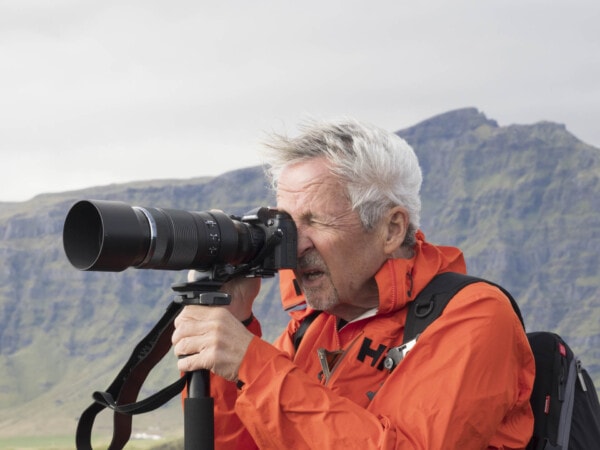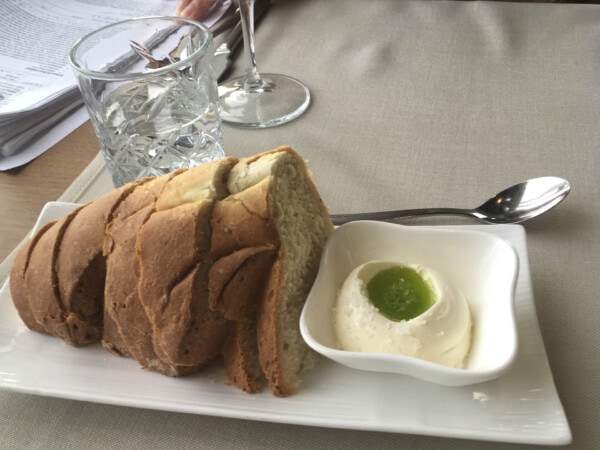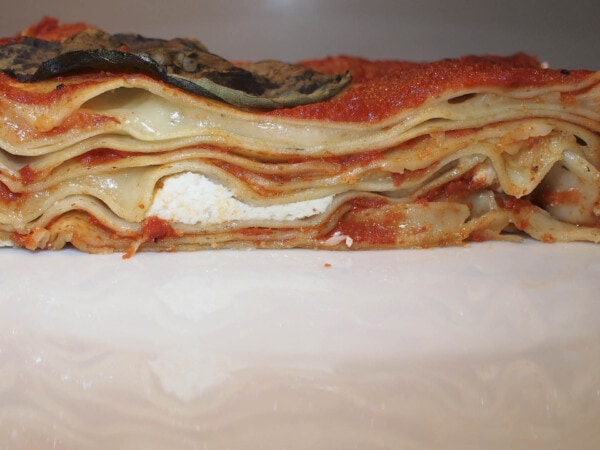The upswing of our trip to Iceland last year (our first international trip after the Covid lockdown) was arriving in August on the first day of the new school year and flying home on the second weekend in September, the official start of their winter. Perfect timing. But once again, it meant Magellan would spend another birthday away from home.
Determined to make his birthday special, I found a secluded family-run hotel at the end of a gravel road, each of its twenty-eight rooms offering a view of craggy mountains or the North Atlantic and a restaurant serving locally sourced Scandi fare with breakfast starting at 7 am. And one more thing. They advertised “…our own private black-sand beach.”
Early risers, we had three hikes under our boots by mid-afternoon when we arrived at the low-rise geometric UMI Hotel. Just in time for half-price on a glass of wine in the hotel’s bar overlooking Eyjafjallajökull, the nearby sub-glacial volcano that erupted in 2010 and closed down European air traffic for a week. “Is beer half-price, too?” Magellan asked, the answer a happy birthday surprise.
Modest and modernist, the UMI Hotel is in Eyvindarhólar, a place described as “a farm and a church. Parsonage until 1904.”
It still feels that remote.
The Svaðbælisá River flows peacefully alongside fields of sun-burnished grasses. Only a lone farmhouse stands in the distance beyond the hotel. Yet UMI is only two kilometres off the Ring Road, midway between the towns of Hvolsvöllur and Vik on Iceland’s South Coast.
The couple who own the hotel, Siggi and Frida, have a long history with this special place. Siggi spent his boyhood summers in the area and as a teenager, he worked on the Eyvindarhólar farm. Later on when the farm was abandoned, Siggi purchased the property and began renovating the farmhouse on weekends. Along with his wife Frida and their two grown children, Solon and Sandra, they designed and built this stylish hotel on their property. Sandra, an interior designer, writes, “The idea of opening a hotel came to us because we were thinking we would like to share the beauty of this area with the world. The hotel is owned by my parents, they are my bosses and my family manages everything around UMI.” The hotel opened on August 15, 2017, five years before we arrived. It shows no signs of aging.
Tempting as it was to read in the lounge or on the lichen-green chairs by the picture windows in our room, the hour was golden and the staff encouraged us to take the twenty-minute pathway to the hotel’s black-sand beach.
On the trail, we met a young couple returning to the hotel. “See many birds?” Magellan asked. “There’s one sitting in the middle of the trail just ahead,” they told us. “It doesn’t seem well.”
A Northern Fulmar. (Not that we knew then; we thought it was a gull of some sort.) It’s described as, “A stocky gull-like seabird with a thick neck and a bull-headed appearance. Flies like a tank with stiff wingbeats…The bill is stout and hooked, with two nasal tubes on the top edge.” Its immobility raked our hearts.
What was wrong with it?
“That bird might have avian flu,” Magellan said. It has been on his mind ever since our trip to Cape St. Mary’s in Newfoundland.
(It’s worrisome. Fewer birds visit our back deck in Vancouver this summer and we’ve noticed the same thing in Saskatoon last week when we were there, reminding more that in the Middle Ages, hell was envisioned as a place without birds.)
A few days before we were at the UMI, devilish lashes of wind and rain cut short our visit to the famous black sand beach at Reynisfjara. Little did we know that the hotel’s beach, which we assumed was simply a little crescent, the diamond in the hotel’s chest of jewels, would be more fun.
No one else was on the volcanic-black beach. Nothing, save the steady pulse of the sun, the white ribbon of a wave, the glinting of the sea, dusk shadowing the distant heath.
It was so exhilarating that only the fading light convinced Magellan to fold up his monopod and go for his birthday dinner.
Which began with a martini made from Icelandic gin, dill aquavit and rhubarb liquor. Then an appetizer of scallops with sunchokes and caviar, minus the usual price because it was local caviar. Lamb chops with a savoury panna cotta flavoured with mint and peas, barley wrapped in a wasabi leaf like a dolmade, Arctic char with spinach dumplings and romesco sauce for me. Dessert (”No, don’t pre-order me a cake,” he said) was a rhubarb mousse with rhubarb meringue, rhubarb ice cream (made with Skyrr, an Icelandic cheese masquerading as yogurt) and brioche crumble. Accompanied by a magnificent view of the Westman islands and the southern coastline.
Umi, in Japanese, means ocean. In Egyptian, it means life. UMI is also an acronym for Unique Molecular Identifier—random barcodes with an infinitesimal chance of being duplicated. UMI Hotel is a triumvirate of these definitions, an incomparable experience of life by the ocean.
“Our best day yet?” reads my Icelandic diary.
Hard to say, even in retrospect.
The pendulum continued to oscillate upward throughout our trip.
Until the airport at Reykjavik, crowded and in need of a serious expansion ( nearly 4.6 million people arrived at or departed from Keflavík in 2022), the likely source of our covid infections a few days later. We recovered with no lasting symptoms, mobile, ready to celebrate many more birthdays, at home or away.
Was the Northern Fulmar as lucky?
Navigation
Alice Oswald is the poet whose words title this story and grace the North Atlantic image, is an award-winning British poet and Professor of Poetry at Oxford University.
All About Birds, our source for info on the Northern Fulmar.
UMI Hotel a great place to stay.























4 Responses
The true beauty of this area is the remoteness and lack of people, true bliss.
Happy birthday to the “Engineer” have an “Awesome” year ahead.
Cheers,
Thanks for the best wishes. As long as we remain mobile and we are still able to rent a car (ie, not too old under their contract), we will continue to search out remote areas.
We’ve noticed fewer song birds in our yard in Saskatoon but attribute to the invasion of crows and magpies. At Turtle lake we had some cardinals this spring and for the first time in a long time Barn Swallows ( sign of good luck ) built a nest again at our cottage.
This a marvellous hotel you found and what a birthday supper!! haven’t had Arctic char in a ling time. Lucky guy.
Great trip but why bypass the hot pools ? Probably you’ve been there before.
A neighbour couple that specialize in wild bird protection (mainly eagles and owls) concur that both the nearby crow and resident Canada Goose population are down significantly due to avian flu. The song bird population may also be down, but those that remain are more obvious and vocal, possibly because there are fewer crows to hide from.